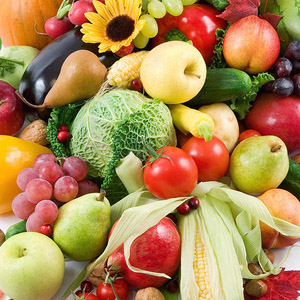The most of vitamin E in human blood and tissue is &alpha tocopherol that localize in lipid bilayer membrane of the cell and protect unsaturated fatty acid and other components from oxidative damage. In animal experiments, vitamin E deficiency leads to infertility, encephalomalacia, liver necrosis, renal failure, hemolytic anemia and muscular dystrophy. The excess of vitamin E leads to bleeding tendency. There is no deficiency or excess of vitamin E in usual dietary intakes.
The reported absoption of vitamin E ranges from 21 % to 86 %, the exact rate of vitamin E absorption is not known. There is a National Health and Nutrition Survey in 2010 and 2011 for Japanese as a research for α tocopherol intake. In adults, the approximate amount has been set from median intake and in elderly, it has been set according to adults. Because there is no reports about approximate amount of vitamin E in child, then it has been set according to the such median intakes in National Health and Nutrition Survey as in adults. In 0-5 months Japanese infant, the approximate amount has been set with multiplying α tocopherol concentration by standard amount of breast milk and in 6-11 months infant, it has been set by extrapolating the body surface area of 0.75 square of body weight ratio, respectively. In pregnant and lactation, it has been set according to the median intakes of vitamin E in pregnant and lactation in the National Health and Nutrition Survey between 2007 and 2011. The upper limits have been set from extrapolating of the body weight ratio of reference weight in each age group.
| Gender | Male | Female | ||
|---|---|---|---|---|
| Age | Approximate amount | Upper limit | Approximate amount | Upper limit |
| 0-5 M | 3.0 | 3.0 | ||
| 6-11 M | 4.0 | 4.0 | ||
| 1-2 | 3.5 | 150 | 3.5 | 150 |
| 3-5 | 4.5 | 200 | 4.5 | 200 |
| 6-7 | 5.0 | 300 | 5.0 | 300 |
| 8-9 | 5.5 | 350 | 5.5 | 350 |
| 10-11 | 5.5 | 450 | 5.5 | 450 |
| 12-14 | 7.5 | 650 | 6.0 | 600 |
| 15-17 | 7.5 | 750 | 6.0 | 650 |
| 18-29 | 6.5 | 800 | 6.0 | 650 |
| 30-49 | 6.5 | 900 | 6.0 | 700 |
| 50-69 | 6.5 | 850 | 6.0 | 700 |
| 70- | 6.5 | 750 | 6.0 | 650 |
| Pregnant | 6.5 | |||
| Lactation | 7.0 | |||
| Gender | Male | Female | ||
|---|---|---|---|---|
| Age | Approximate amount | Upper limit | Approximate amount | Upper limit |
| 0-5 M | 3.0 | 3.0 | ||
| 6-11 M | 3.5 | 3.5 | ||
| 1-2 | 3.5 | 150 | 3.5 | 150 |
| 3-5 | 4.5 | 200 | 4.5 | 200 |
| 6-7 | 5.0 | 300 | 5.0 | 300 |
| 8-9 | 6.0 | 350 | 5.5 | 350 |
| 10-11 | 6.5 | 450 | 6.0 | 450 |
| 12-14 | 7.0 | 600 | 7.0 | 600 |
| 15-17 | 8.0 | 750 | 7.0 | 650 |
| 18-29 | 7.0 | 800 | 6.5 | 650 |
| 30-49 | 7.0 | 900 | 6.5 | 700 |
| 50-69 | 7.0 | 850 | 6.5 | 700 |
| 70- | 7.0 | 750 | 6.5 | 650 |
| Addition for Pregnant | 0.0 | |||
| Addition for Lactation | 3.0 | |||
br>
The Dietary Reference Intakes for Japanese (2015 edition) Fat-soluble vitamin (pdf) br>
The Dietary Reference Intakes for Japanese (2010 edition) Vitamin E (pdf)

